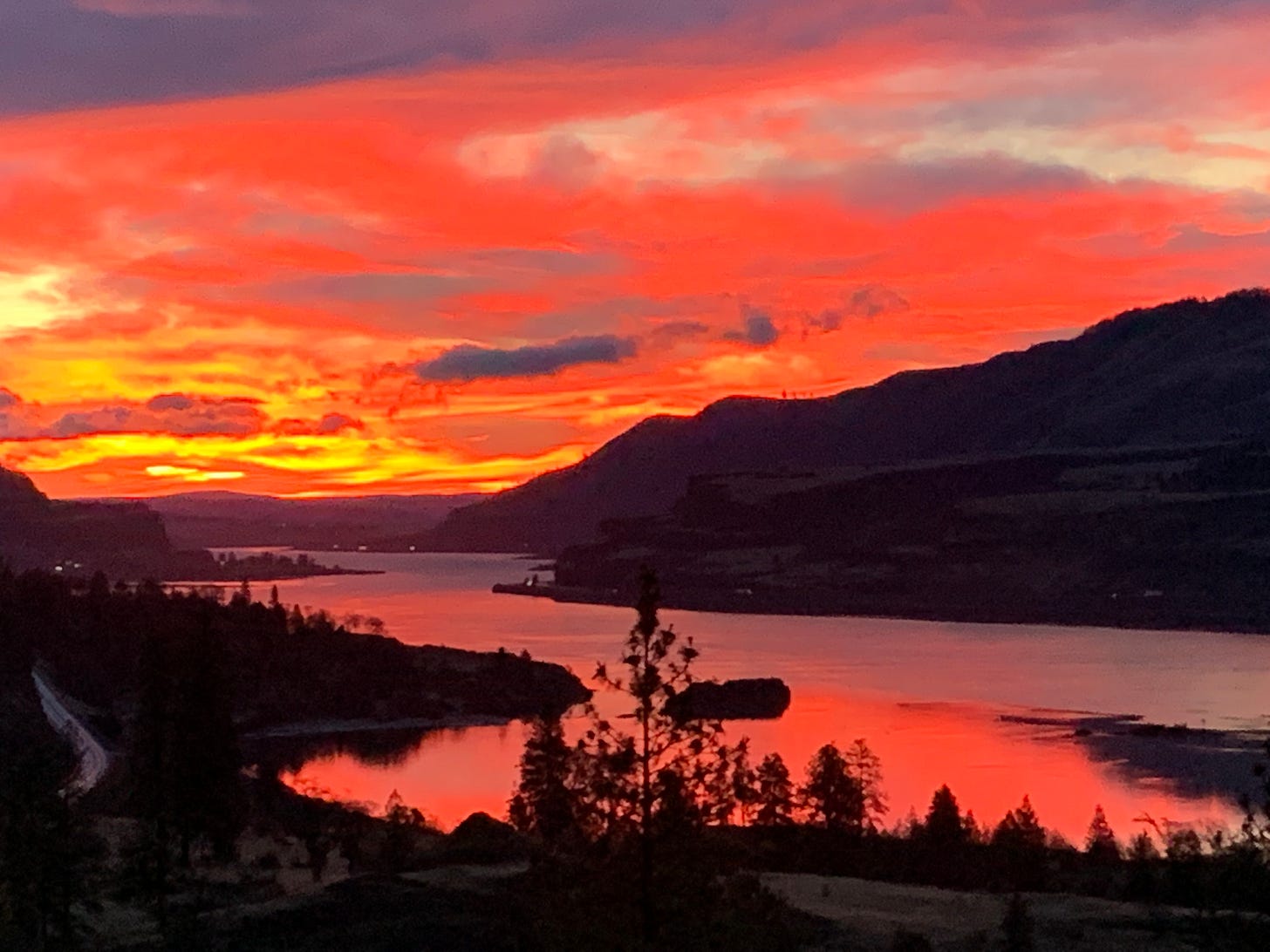If you travel the length of the Columbia River, especially during the wet spring, you soon realize it’s a many-toed beast. Water cascades into it from most of its promontories. Remnants of historic floods through the millennia, snow melt and storm—even wind takes its due. Sometimes basalt puts up a hurdle. Celilo Falls was one of them.
For eleven thousand years, people were drawn to Celilo for its life-giving properties: salmon, eel, and sturgeon, and because of their abundance, trade developed between people. Dried salmon was pounded into cakes, called kuluk, and wrapped in dried grass and salmon skin. People traded what they had: horses, knives, axes, beads, baskets, berries, buffalo robes, and they came from hundreds of miles to do so. The village site was a place of wellness and healing.
If you follow the balsamroot and the lupine down to the Columbia from the ridge above The Dalles, the Celilo Cancer Center perches on the side of the hill like a giant flower. It draws patients like bees—and they come to it for its healing from across the Columbia and far upriver. I met individuals this week from as far away as Umatilla and Tri-Cities. People at the center trade what they have—skill, medicine—to help sustain and treat those that come, and it is this trading that still endures. Celilo is a metaphor maintained today, and it started thousands of years ago. One could imagine what it must have been like.
The basket sat between the girl’s legs at the bottom of the cedar canoe, and she held it with her calves so that it would stay upright and not spill.
“Brtittle as eggs, but sharp,” her grandmother told her. “Be careful.”
Made of willow and reed, the basket held grasses to cushion what the Northern Modoc grandmother called “black lake” rock. Her mother had told her that, long ago, a lightning storm had solidified the lake near Broken Top and turned the side of the mountain into shiny rock.
The Modoc family of five portaged several falls as they traveled, but each detour took them closer to the great trading center: Wy-am, or Celilo on the big river. For nearly sixty years, the grandmother had returned to the river to trade her baskets and their cargo of knife and ax stock, returning to her ancestral lands. This year would be different. She intended to stay by the falls and watch the salmon return. She’d decided to lay out her rug on the hill above the falls, listen to the falls singing, and die.
The basket of spear and knife point rock made its way north through the Tygh and the Tenino lands along a winding river. The girl was patient and watched the waterfowl explode from their nests, but the grandmother was less so, for she knew most of her days were behind her, much farther back than from where she traveled, and they wound around her memory as tight as her long braid. She looked forward to seeing the leaping salmon as they continued their journey to lay their eggs and to hearing the thunder in the falls.
The trails to Celilo on the river or its tributaries cannot be seen. Water’s greatest irony is no trace will it leave upon it, yet its foot may. If you know where to look, above its banks those trails are still discernible. The rock shards from their points and axes and salmon knives are the scattered remnants of their journies.



Excellent writing, Doug. A treasure for those of us who love the Gorge and who love YOU!
Such vivid images. I saw them and I felt quite emotional from this piece. Thank you